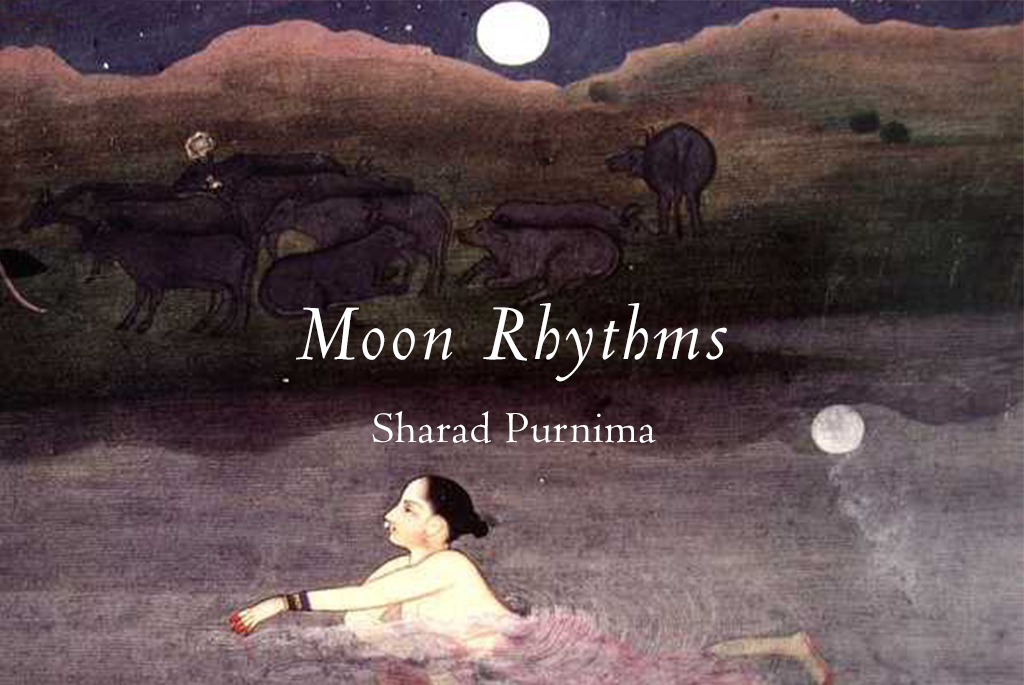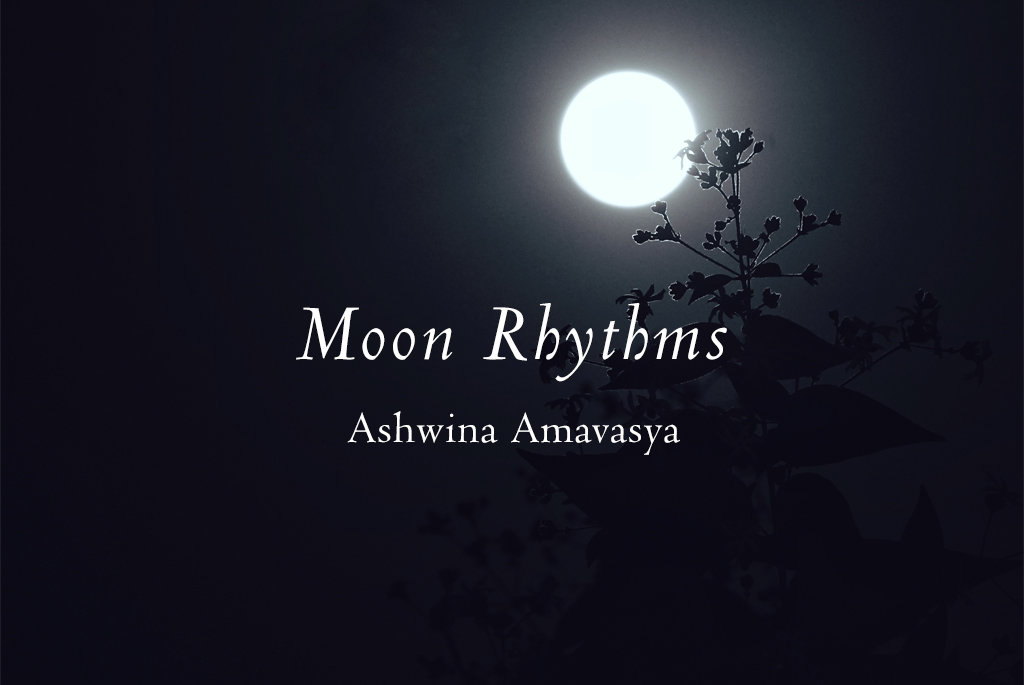




Amavasya or New Moons are traditionally thought to be times of fresh beginnings. From the dark night the Moon is reborn to grow into luminescent fullness. And so, today, on the New Moon of October 16, Paro is launching its new monthly newsletter– Moon Rhythms to complement Paro’s Seasonal Rhythms emailer.
Seasonal Rhythms follows the cycle of the months in the traditional luni-solar calendar of the subcontinent. Moon Rhythms is aligned to the lunar cycle – from one New Moon to the next.
The Moon has watched over the earth and all its inhabitants since the creation of the cosmos. Science tells us that the Moon is not a planet or a star but a satellite; forever locked in the Earth’s orbit, with one side facing us and other facing the Sun. All of this is correct. But the Moon is so much more.
For our ancestors the Moon was the site of the first magic; when they looked up into the dark night sky, it was the Moon that struck them with its beauty and mystery. For our collective consciousness, the Moon is the first mystery, the first marker of time, the first visible cycle of death and rebirth.
The Moon is never still, every night it changes. It grows to fullness and then it wanes to nothingness. In its mutability, its transformative phases we found perhaps our first clock, our first cycle of measurable, quantifiable time. At the root of astronomy, mathematics and the science of space exploration lies a spatial and temporal understanding. And the first temporal chart that we perhaps mapped out was the lunar cycle.
The stories woven around the Moon are perhaps among the oldest stories. And they are universal; they appear in every culture from the beginning of human history. Many markings on rocks, bones and stones from periods as long ago as 30,000 years ago appear to be recording and tracking the lunar cycle. To them the Moon appeared as this ever-changing being of light that seemed to be wandering across the sky every night. Its absence had its own impact. Just as the Sun was the centre point of attention during the day, the Moon commanded our attention with its beauty and mutability at the night. And so, our ancestors wove stories of creation and transformation and of renewal around the Moon. Thus, “the Moon’s story of birth, death and rebirth becomes, in its perpetual repetition, the story of time which is lived by human beings on Earth.”
Lunar Cycle: Start with the beguiling shimmering orb that is a Full Moon. Over the course of the next 14 to 15 days, the Moon starts to lose its roundness, sliver by sliver. It wanes till it reaches a thin crescent. And then disappears entirely, giving us a dark night, lit only by starlight. And then, lo and behold, a thin sliver of silver appears in the night sky, waxing each night till it becomes a luminous orb or light, giving us the beauty of a Full Moon night. This unceasing cycle of the waxing and waning Moon is the lunar cycle. It lasts approximately 29 days – going from one Full Moon to the next; or from one New Moon (as the dark, moonless night is known) to the next. As we mapped the Moon cycle we also became aware of its correspondence with other cycles in our lives. For women the most immediate correspondence is between the Moon cycle and the menstruation cycle. Both are of approximately the same length. Perhaps, when we lived amidst nature and were more aligned with nature, our periods displayed an exacter correspondence.
The impact of the lunar cycle is visible in so many other cycles of the Earth – growing, sowing, harvesting, in our bodies physically, in our mind and thoughts, in our emotions, in the turning of the seasons, in the laments of our sorrows and in the songs of our celebrations. A visceral and tangible example of this impact is on Tides – Spring Tides is a phenomenon related to the Full and New Moon days. Like the waters of the seas and rivers, the water in our body also responds to the call of the Moon. In the Vedic understanding, the Moon is most closely linked to the Mind; it impacts our consciousness and thoughts. In tangible and intangible ways, the Moon permeates our lives regardless of whether we realise it and acknowledge it or not.
Over the millenniums of human history and consciousness, the Moon has become a part of us and our lives. It is an inextricable part of so many of our myths and stories and rituals and rites; we have tried to understand the ebb and flow of the Moon, we have learnt to work with the mutable energy of the Moon. We have learnt that under the moonlight there is a time for everything – time to expand and grow and nourish our bodies and minds and a time to focus inwards and cleanse our bodies and minds. And then, at some point in our modern lives, we forgot that we are children of the Earth and the Sun and the Moon; that our bodies and minds flourish when we seek synchronicity with the natural cycles of all three of them. It is these natural cycles – of the Earth, Sun and Moon that we want to be realigned with.
Paro’s monthly Moon Rhythms newsletter, starting with this month, seeks to help us remember our traditional knowledge and ancestral wisdom of the Moon, where we understood how to align our bodies and minds with its cycle and energy.
Join us in our monthly journey – the Moon Rhythms newsletter where we explore and learn more about the magic and energy of the Moon.
Wow… Being a selenophile I am really happy with this concept that paro has got about! I consider moon to be a handsome man who looks over me with so much love and care. It is always a moment of trance when I look at the full moon. Moon is a powerful magnet that attracts me and very difficult for me to distract from. So am glad that Paro has taken such a beautiful initiative!